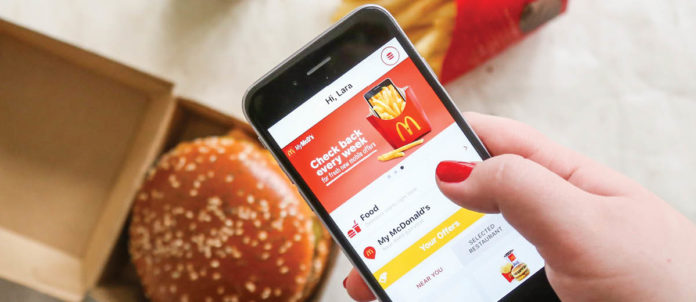Convenience is king for today’s consumers — especially when they’re hungry. This means a seamless digital-ordering experience, from the first tap on a mobile app to the final bite of food, is key to enticing and retaining customers in the Canadian food-service industry.
It may seem simple (and that’s the goal), but creating an easy ride for customers means getting many tasks right along the way. A seamless digital-ordering process often involves integrated digital technology that logs digital orders and payment into your point-of-sale system. It also involves great in-store ergonomics, where customers and couriers easily pick-up food. And don’t forget excellent packaging and delivery, so food arrives home exactly as intended.
Cris Jucan, CEO of Toronto-based Tacit Corporation, which offers cloud-based, fully integrated ordering systems, says point-of-sale integration, where digital orders go directly into the store’s ordering system, is at the heart of seamless ordering.
“Starting in 2018, we saw a shift from non-integrated solutions to integration,” says Jucan, adding non-integrated systems (where employees manually add digital orders to local POS systems) result in mistakes in up to 15 per cent of orders. That can mean disappointment, or worse, for the customer and losses for the company.
Next-level technology includes omni-channel integration. In practise, omni-channel integration offers an enhanced customer experience, where preferences are tracked across multiple channels (website, app, in-store) to offer customers personalized service. McDonald’s Canada is already onboard.
“In 2019, we acquired Dynamic Yield, a machine-learning-based AI company that will transform our drive-thru experience by providing personalized and customized menu selections to our guests,” says Lara Skripitsky, vice-president and Chief Technology Officer at McDonald’s Canada. “We see the power of personalization and customization of the guest experience as something we’re just getting started with and have very high ambitions for the future.”
Vince Sgabellone, a foodservice industry analyst with The NPD Group, says omni-channel integration is the newest technology to watch.
Some elements of seamless ordering are more administrative. For example, ensuring menus with partner apps such as Uber Eats or SkipTheDishes are updated. And when it comes to delivery — which Sgabellone says accounts for 44 per cent of mobile orders — food needs to arrive fresh and at the correct temperature.
Starbucks Canada partnered with Uber Eats for delivery in 2019 and Peter Furnish, Starbucks Canada vice-president, Product & Marketing, says custom packaging was created to keep food at temperature “and to ensure delivery drivers can easily transport multiple beverages at a time.”
Other elements of seamless delivery include an efficient pick-up area that’s properly staffed during busy times. Skripitsky says the ergonomics of seamless ordering are a priority at McDonald’s Canada.
“Our restaurants are designed to manage foot traffic walking in, but also the orders through the MyMcDs app and McDelivery in partnership with Uber and SkipTheDishes.”
Digital ordering in Canada is growing by more than 20-per-cent per year, says Sgabellone, eclipsing the single-digit growth seen by the industry itself, meaning a strong digital presence is more important than ever. But it’s not necessarily an “if-you-build-it, they-will-come” scenario. Jucan says digital roll-outs work best when supported by a
good marketing program to drive customers and engagement. Still, with double-digit growth and ever-demanding customers,
Jucan says a solid digital presence is nothing short of “critical.”
Written by Cindy Mcglynn


















